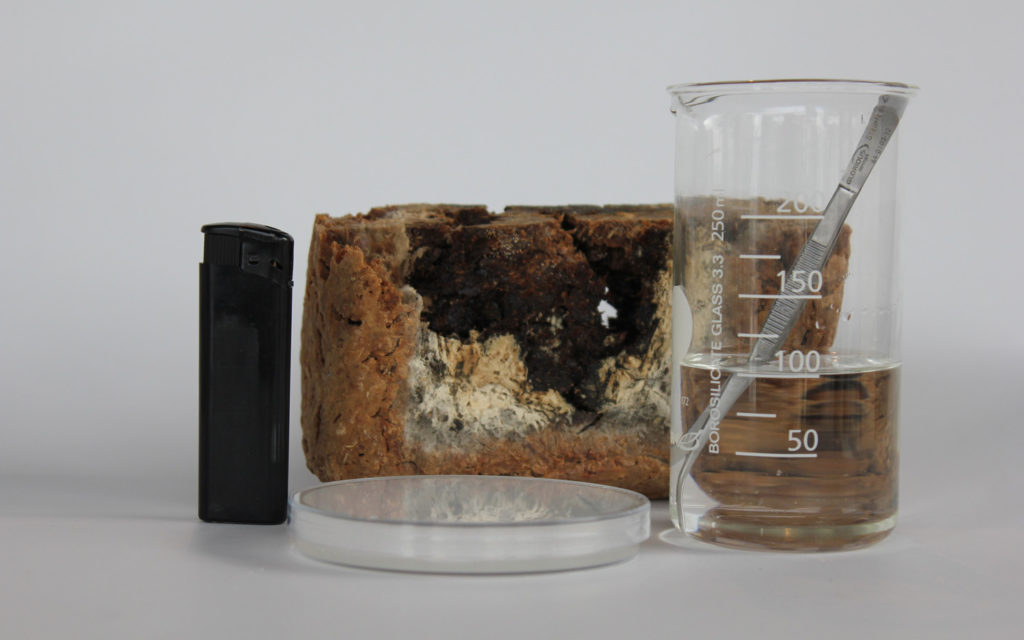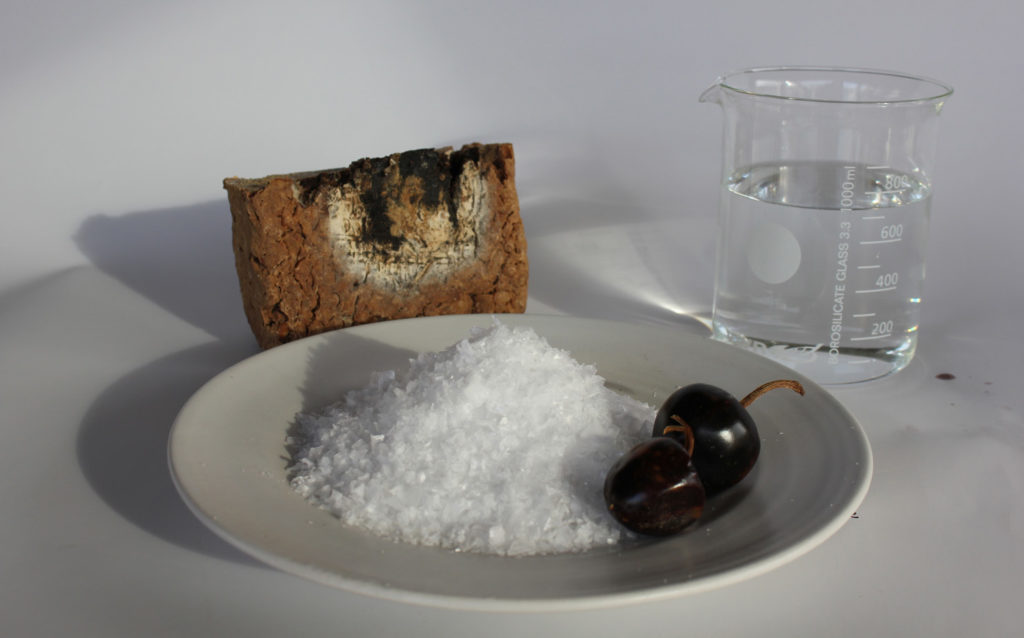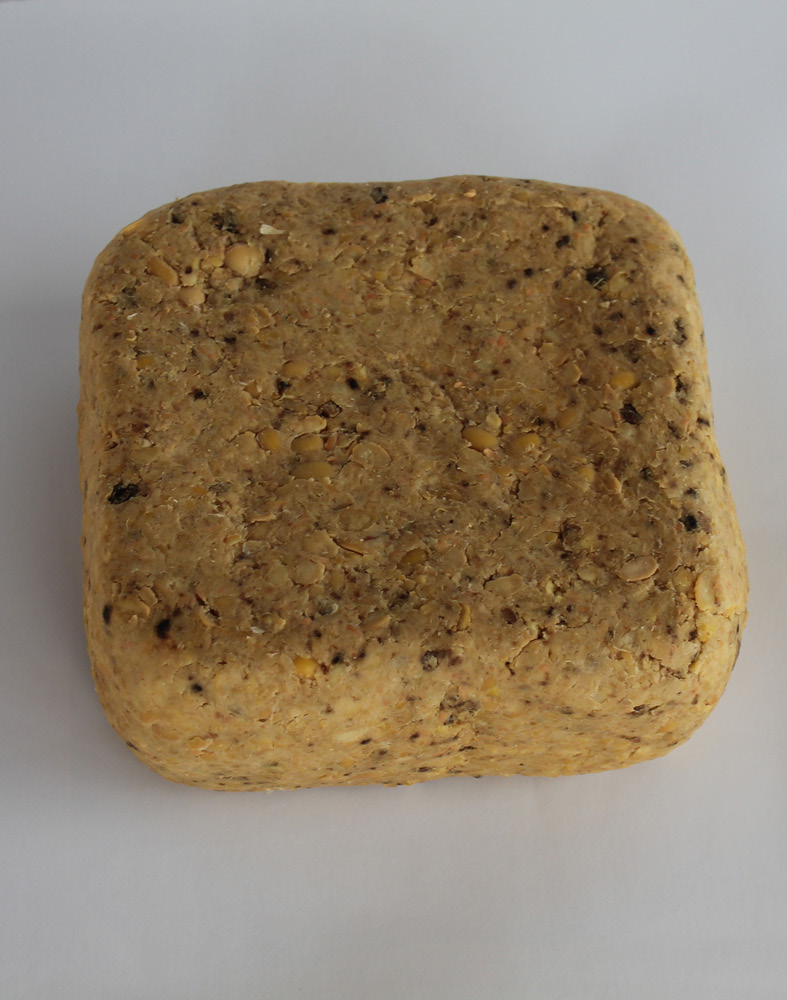by Ben Reade.
by Ben Reade
Meju is a traditional Korean fermented soy bean cake which has been dried for around 6 weeks while molds (mostly Aspergillus sp.) and bacteria (commonly Bacillus sp.) break the macromolecular structure down. The resulting brick of fermented beans can then be added to salt-water brine (sometimes along with chili and wood charcoal) and left to ferment in ceramic crocks over long periods of time – the youngest I have tasted is 2 months and the oldest, seven years. Salt rich fermentations of protein (like this one) are excellent for producing umami taste (a passion of NFL). After the allotted fermentation period, the meju and brine will have turned into umami tasting doenjang and ganjang respectively. The removed block of doenjang will be mashed up and used as something similar to Japanese miso leaving the ganjang brine – which might be termed ‘soy sauce’.
So in late October, Nordic Food Lab had the pleasure to Turin for Salone del Gusto and Terra Madre, which together make one truly enormous event full of a larger diversity of foods than I have ever seen anywhere else – a neophile’s heaven. At the event I had the privilege to meet a Korean Buddhist Priestess (that kind of thing just happens there). This lady spoke about the importance of her spiritual philosophy in making traditional monastery foods and particularly about the importance of fermentation. When I saw what she had on her table I knew I absolutely HAD to get my hands on it – meju. I managed to persuade the priestess to part with the mysterious looking block, and she gave me some instructions on how best to deal with it, although a certain amount of the information was certainly lost in translation.
When I asked the Priestess if she had inoculated the meju she assured me that she hadn’t, which made me intensely curious as to what microorganisms were growing on it. Upon closer inspection of the meju I could see how biodiverse the whole thing was, I can see at least four or five different molds growing (see above). In order that I can get the most of the meju I have split it in parts, 1 half to be fermented in brine, another to use to inoculate a further batch of meju and various crumbs and interesting sections of the brick have been placed on petri dishes so I can breed up some of the species living on the bean-cake in order to have them analysed (some crumbs have been collected and kept as they are, also for further analysis).
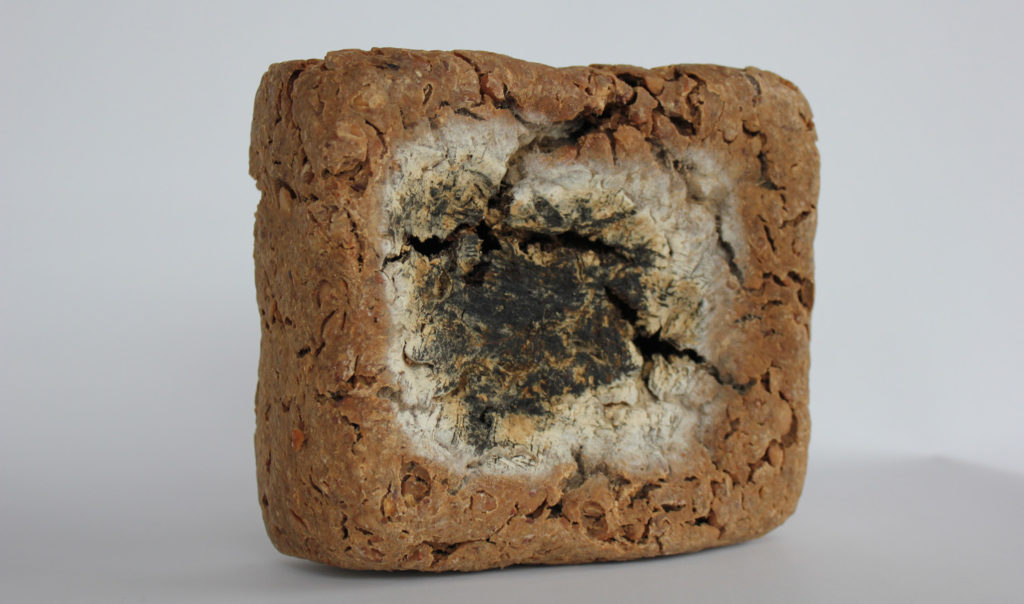
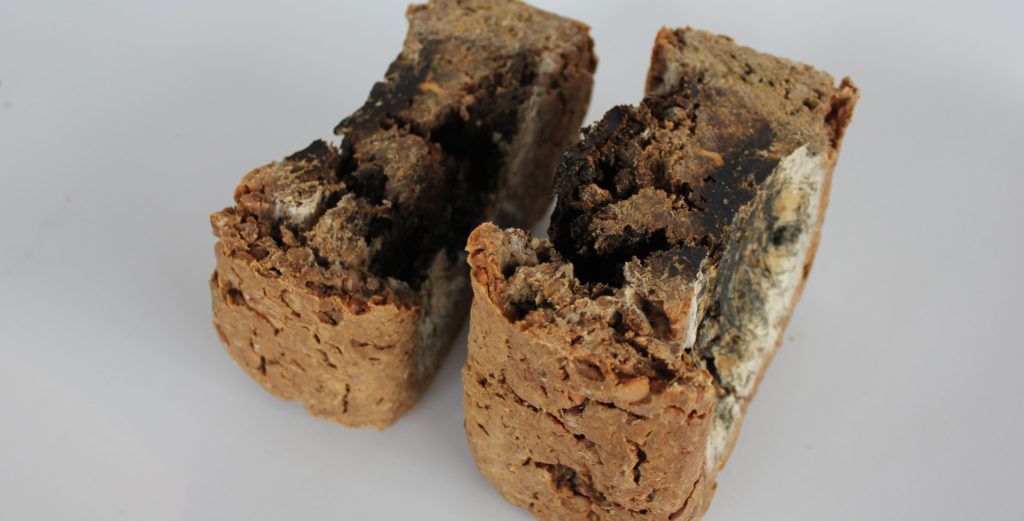
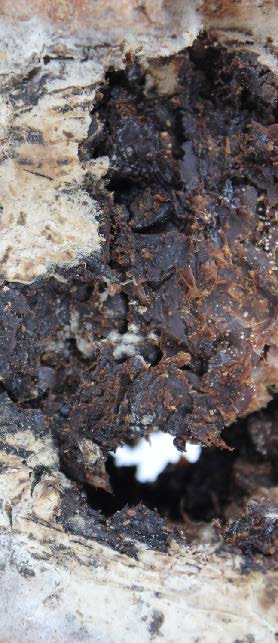
To make petri dishes for a growth of mold, a standard mix of dextrose (20g/1L), agar (15g/1L) and potato starch (4g/1L) is sterilized in a pressure cooker. It is then poured into sterile petri dishes which are cooled until they coagulate and then a small portion of the meju can be added to a few different dishes. It is important that the lid of the petri dish is kept on the dish at all times, and when the meju was put in, this was done with as little exposure to the outside world as possible (i.e. don’t sneeze on it!). The tool used to take parts of the meju, was dipped into pure alcohol and then set alight before touching the pieces to be sampled. The lids of the dishes should be kept on the dishes at all times and as soon as the sample was put into the dish, it is labeled, dated and wrapped up with cling film.
So, back to the two halves of the bean loaf, one of which is to be fermented into doenjang and ganjang, the other of which will be used a starter culture for more meju. Now to the 1100g block of meju: I was instructed by the Priestess to add 1.5 L of water and 500g sea salt with chili peppers and leave it to ferment for 2 months. As I have chopped it in half, I will be adjusting the recipe appropriately.
550g Meju
250g Sea salt
750g Water
2 Chilis
With the other half I wanted to use it to inoculate a new batch of Meju. I soaked 3 kg of organic white soybeans over night, and then boiled them slowly until they yielded easily to finger pressure. At this point the beans were drained and allowed to cool – they now weighed around 7 kg. Following this I mashed the beans with my hands until a paste was formed. I added into this the second half of the meju which I had turned into a coarse powder. This was then kneaded into four bricks of which will be dried on a cool shelf for the next week at which point they will be bound in straw and hung in a breezy place to cure over the following forty days. Then I will repeat this whole song and dance, just on a larger scale.
